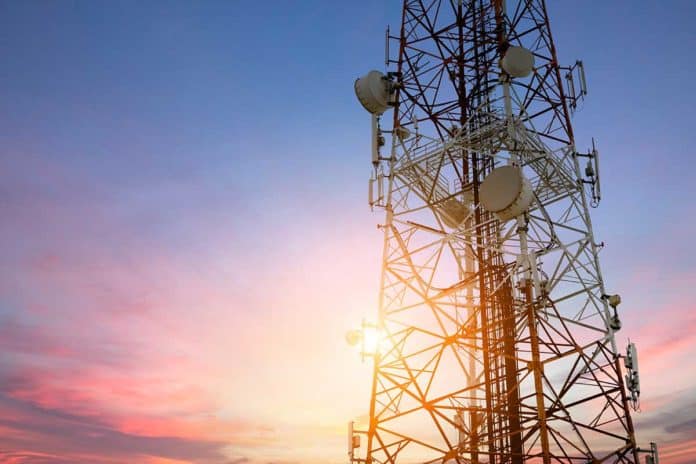MANITOWANING—The North Channel CabinBoat Company announced last week that Henley Boats in Manitowaning will produce their custom solar powered catamaran cruisers. Henley Boats, the only boat manufacturer in the world that builds roll-form aluminum lapstrake hulls, will be constructing the unique 10 ft x 30 ft catamaran coastal cruisers.
The North Channel Thirty was designed from the keels up with an older demographic in mind, specifically for bareboat chartering in the North Channel of Lake Huron and Georgian Bay where it’s mostly sheltered but can get rough quickly, but it is also suitable for other cruising areas, said the company. It will be an easy boat to drive with a single Suzuki 115 hp outboard and just as easy to dock with proportional bow and stern thrusters controlled by a joystick.
The Thirty features an industry first: an environmentally friendly microplastics collection system that consists of a filter installed on the engine’s cooling water inlet. According to the United States Geological Survey, there are 112,000 particles of microplastics (plastic particles that are five millimetres in size or greater) per square mile of Great Lakes water. This innovative filter is designed to help clean up our waterways by gathering microplastics and other tiny bits of debris that are sucked in by the engine.
It will also be eco-friendly and energy efficient with up to 3,000 watts of solar power on the roof combined with Victron lithium ion batteries. The solar team consists of Jason Blier of FSA Solar, Graham Morfitt of Modern Outpost and Michael Murray of Independent Energy Solutions from Tehkummah.
“We are working with solar panel creators to design and install custom solar panels that will fit snugly up against the curve of the roof for better esthetics,” said Ian Ross, vice president of the North Channel CabinBoat Company. “Our solar consultants insist that the small genset will only come on if the sun is absent for four or more days, thus keeping the boat nice and quiet at anchorages. The Suzuki outboard produces 20 amps of power at idle and 40 amps under power so moving the boat from one anchorage to another would charge the lithium ion batteries.”
Interest in the boats is already high. Following last week’s announcement, the phone at Henley Boats never stopped ringing, said owner Dave Ham. “You wouldn’t believe the number of phone calls we’ve had here, from British Columbia and also a number of calls from Alberta and the east coast. We’re blown away by people wanting to place an order for one of these boats.”
They might have to wait to get their hands on one. Henley Boats is booked solid for the next two years, Mr. Ham said. “Orders have definitely increased since the COVID-19 pandemic began. We’re just going gangbusters.”
They’re already working right now on an expansion of their existing facility. “We just do not have enough floor space. That’s the big problem. Our overhead doors are 24 feet wide and 20 feet high and the doors are too small for some of the vessels we’re building inside.”
Mr. Ham couldn’t comment on the solar powered catamaran itself. “We don’t mind building it. Our naval architect is very excited about it. We can build the hull and quickly,” he said, but explained there are still details to be confirmed, including information on the solar design.
The solar system is mostly finalized, said Jason Blier of FSA Solar, one of the solar design team. There may be design changes as they delve into the finer details. Right now, the vessel is being designed to use solar power with conventional power (diesel) as the back up method. The CabinBoat company would like to eventually use electric motors or possibly fuel cells or thermostatic generators for backup power, meaning much less fossil fuel on board, Mr. Blier said. “Right now those technologies are very niche and not really economically feasible for something like this but it’s coming.”
The company wanted a system that provides power but stays out of the way and lets the user know if something is wrong while still looking good and clean enough to show off. That criteria determined the equipment to be used. They’ve chosen to use Victron equipment, which is very big in Europe. “They’re specialists in mobile and marine compatible products and they also have excellent connectivity between their components,” Mr. Blier explained. “They can communicate by Bluetooth or wireless using a proprietary system and you can centrally monitor everything from one spot. Everything talks to each other, which is important on a vessel.”
Victron equipment is a little bit higher priced, Mr. Blier continued, but you know it’s all going to work together. “It’s also very clean looking. All the components are attractive and there’s no wires everywhere. You can open the hatch to show someone and there’s nice blue covers on everything. It’s aesthetically pleasing and gets the job done. Having something totally custom is great for bragging rights but it’s horrible if something goes wrong. This equipment basically uses off the shelf components so it can be scaled up or down as needed and is easy to repair. This had to be something that any service guy or electrician can go in and figure out, order parts and fix.”
For the project, Mr. Blier designed the main power components while Graham Morfitt of Modern Outpost designed the solar panels on the roof of the vessel and determined how to integrate those cleanly and Tehkummah contractor Michael Murray will be part of the implementation team. “We’re still playing around with the final details,” Mr. Blier said. “We’re looking at various options, at cost versus usability versus serviceability versus durability. There are a lot of factors to balance there.”
The solar panels themselves are worth mentioning. Mr. Morfitt looks for manufacturers that have third party verification audits, said Mr. Blier. “The panels we are using are from REC and they have a very high rating for both business ethics and environmental responsibility. They’re also really nice looking, high performing panels. It’s not just solar for solar’s sake. For this system, we want to work not only with products that are environmentally conscious but that the process for producing these is environmentally conscious also.”
The company says the catamaran cruiser can host a small family or two couples for self-sufficient cruising in the North Channel for a week or more. Facilities include a cabin galley with convertible dinette, fridge and freezer. The head contains a bidet electric toilet, a 30- x 32-inch stand-up shower stall and is equipped with a diesel fired tankless on-demand water heater. The Muskoka room seats eight comfortably and contains two pull out settee/beds. There are plenty of sliding vinyl windows and patio style heavy duty marine doors on both sides. The vessel will be NMMA certified and will be constructed to ABYC standards.
Although the boat is being developed for bareboat chartering in the North Channel, it will also be offered for sale to the general boating public on a semi-custom basis. Charter ownership will be available to individuals or through fractional ownership as well.
The North Channel CabinBoat Company hopes to have the prototype in the water for sea trials around this time next year. They are planning on taking the boat all around the North Channel in its inaugural trial cruises. For more information, contact northchannel@bell.net.





